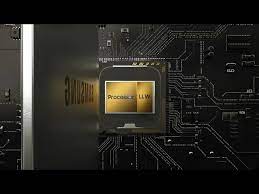Introduction:
The tech world is abuzz with excitement as Samsung, a leader in innovation, announced a groundbreaking development at CES. The company has introduced a new category of memory, known as Low Latency Wide I/O (LLW) DRAM, designed specifically to harness the power of artificial intelligence (AI). This cutting-edge memory promises to deliver an impressive 128GB/s bandwidth while maintaining energy efficiency, opening up possibilities for on-device AI processing.
In this blog post, we’ll delve into the details of Samsung’s LLW DRAM, exploring its capabilities, potential applications, and the implications for the future of AI.
What is LLW DRAM?
LLW DRAM stands for Low-Latency Wide I/O (Input/Output) Dynamic Random-Access Memory. It’s a new type of memory technology designed to address the growing needs of demanding applications like artificial intelligence (AI), machine learning (ML), and high-performance computing (HPC).
- Dynamic Random-Access Memory (DRAM): DRAM, a volatile memory utilized in computers and other electronic devices for data storage and processing, requires refreshing thousands of times per second to retain data, earning it the designation “dynamic.”
- Low-Latency: Latency refers to the delay between the initiation of an action and the actual occurrence of the action. Low-latency memory implies that the time it takes to access and retrieve data from the memory is minimized. This is crucial for applications where speed is a critical factor, such as in AI, ML, and HPC.
- Wide I/O (Input/Output): Wide I/O typically refers to a memory interface technology that allows for a high number of data bits to be transferred between the memory and the processor in a single cycle. This wide data bus can enhance data transfer rates and increase overall system performance.

In simpler Words LLWDRAM is like giving your brain a speed boost and a memory expansion, allowing AI to think faster, process more information, and make smarter decisions. It’s a revolutionary memory technology paving the way for even more powerful and intelligent applications in the future.
Read More: 10 Free AI Tools That Will Blow Your Mind – techovedas
Analogy
Imagine your brain is a high-performance computer crunching through data for an AI model. You need information on millions of pixels to recognize a cat in a video, right? Additionally,Traditional DDR memory is like a single-lane highway carrying that data – slow and prone to traffic jams. Delays frustrate your CPU (the boss in your brain), slowing down the whole process.
Now, enter LLW DRAM. Think of it as a multi-lane expressway with wider lanes and optimized traffic flow. Data whisks through, reaching your CPU (boss) much faster, like VIP access to the information superhighway. The result? You recognize the cat instantly, making split-second decisions for self-driving cars or medical diagnoses.
Read More: 3 Reasons Why TSMC Won’t Adopt High-NA EUV Lithography Until 2032
Understanding LLW DRAM:
Samsung’s LLW DRAM is a revolutionary memory solution tailored for the emerging era of AI. The technology boasts an exceptional 128GB/s bandwidth, comparable to DDR5-8000 modules, while operating with an energy efficiency of just 1.2pJ/b. This remarkable combination of high bandwidth and low power consumption positions LLW DRAM as a potential game-changer in the world of memory technology.
Applications and Target Markets:
Samsung’s recently unveiled LLW DRAM, with a focus on low power consumption, hints at applications in portable devices like smartphones and laptops. The press release, while not delving into specific details, suggests a strategic move towards enhancing efficiency and performance in these key consumer electronics.
The technology’s potential in optimizing power usage aligns with the demands of portable devices, where battery life is crucial. The absence of speed specifications raises questions about its suitability for desktop PCs or enterprise solutions, leaving room for speculation on whether LLW DRAM will be exclusive to consumer electronics or extend its impact across diverse computing platforms.
Additionally,Samsung appears to be targeting a balance between high efficiency and versatile applications, sparking curiosity about the broader spectrum of devices that could benefit from this innovative low-latency, high-bandwidth technology.
Read more: India’s Semiconductor Future Brightens: $1.1B Invested, 10 Major Milestones Reached in 1 Year
AI On-Device Processing:
One of the key challenges in the AI industry has been the reliance on cloud-based processing due to the size and complexity of AI models. Samsung aims to address this challenge by enabling AI models to run on-device using LLW DRAM.
The shift towards on-device AI processing aligns with the strategies of major players like AMD, Intel, and Nvidia, who have been advocating for dedicated hardware such as Neural Processing Units (NPU) and tensor cores.
Implications for the Industry:
As the AI landscape evolves, technologies like LLW DRAM could play a pivotal role in facilitating the migration of AI models from the cloud to local devices. The potential benefits include reduced latency, enhanced privacy, and increased efficiency in AI applications. However, the industry will closely monitor the adoption and performance of LLW DRAM to determine its long-term viability.
Conclusion:
Samsung’s announcement of the Low Latency Wide I/O (LLW) DRAM marks a significant milestone in memory technology, specifically tailored for the AI era. The promise of high bandwidth coupled with low power consumption positions LLW DRAM as a potential disruptor in various markets.
Additionally,As the industry eagerly awaits more detailed specifications and information about its applications, one thing is clear – Samsung is taking a bold step towards shaping the future of AI with this innovative memory solution.
Only time will tell if LLW DRAM becomes a staple in our devices, contributing to the seamless integration of AI into our daily lives.








